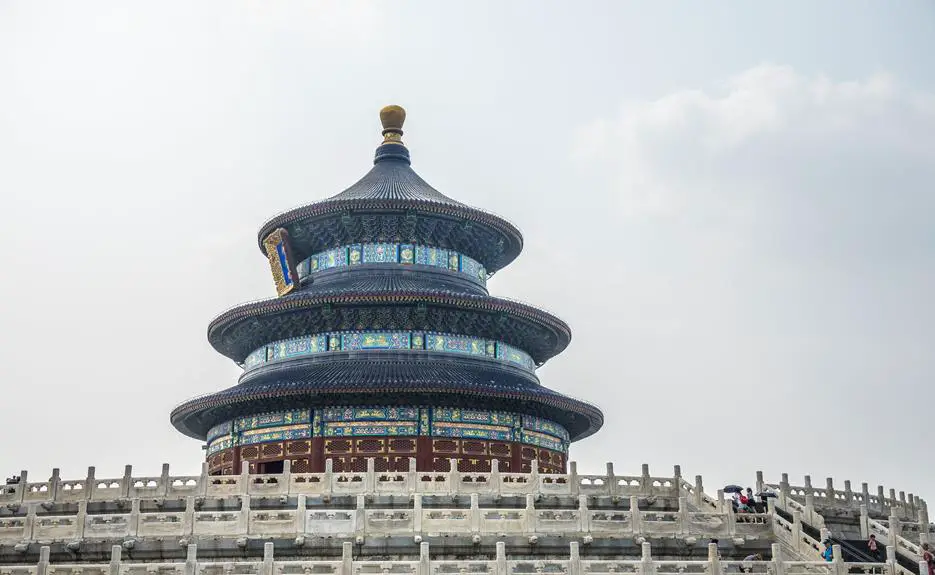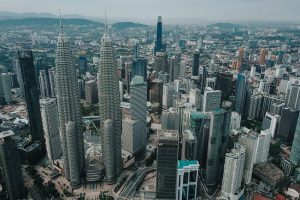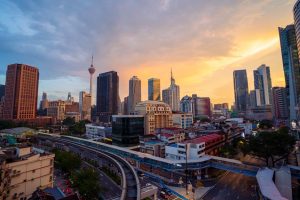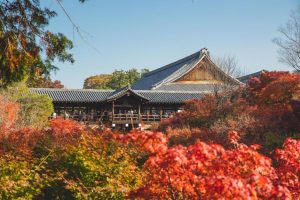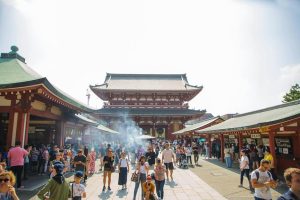Nestled in the heart of China, Beijing stands as a testament to the nation's rich history and cultural heritage. Steeped in ancient traditions, this ancient capital boasts a myriad of treasures waiting to be discovered.
From the awe-inspiring grandeur of the Forbidden City to the serpentine marvels of the Great Wall, Beijing offers a glimpse into a world that existed long before our time.
But beyond its historical significance lies a city that has also embraced modernity, where towering skyscrapers coexist with traditional hutongs, creating a unique blend of old and new.
In this captivating journey through Beijing, we will unravel the secrets of its ancient past while delving into the vibrancy of its present, leaving you yearning for more.
The Magnificent Forbidden City
The Magnificent Forbidden City, nestled in the heart of Beijing, stands as a testament to China's rich history and architectural grandeur. Spanning over 180 acres, this awe-inspiring complex is a masterpiece of ancient Chinese architecture and a UNESCO World Heritage Site. Built during the Ming Dynasty in the early 15th century, the Forbidden City served as the imperial palace for almost five centuries, housing 24 emperors of the Ming and Qing dynasties.
The magnificent architecture of the Forbidden City is characterized by its symmetrical layout, intricate ornamentation, and imposing gates. The complex is composed of over 980 buildings, including palaces, halls, pavilions, and gardens, all meticulously designed and constructed. The palace's striking red walls, yellow glazed roof tiles, and elaborate dragon motifs symbolize the imperial power and prosperity of ancient China.
Beyond its architectural splendor, the Forbidden City holds immense cultural heritage. It not only served as the political center of China but also housed the imperial collections of art, antiques, and ancient manuscripts. Today, the Palace Museum within the Forbidden City houses over 1.86 million artifacts, providing a fascinating glimpse into China's rich cultural legacy.
Visiting the Magnificent Forbidden City is like stepping back in time, allowing visitors to immerse themselves in the grandeur and opulence of China's imperial past. Its awe-inspiring architecture and cultural significance make it a must-visit destination for anyone interested in China's history and heritage.
Exploring the Great Wall
The Great Wall of China holds immense historical significance and is an architectural marvel that stretches thousands of miles across the country.
Exploring the Great Wall offers visitors the opportunity to witness the engineering brilliance of ancient China and marvel at the stunning landscapes it traverses.
From gentle walks to challenging hikes, the Great Wall provides a range of experiences for adventurers of all levels.
Historical Significance of the Great Wall
With its massive scale and remarkable architectural design, the Great Wall of China stands as a testament to the historical and cultural significance of ancient China. This iconic structure, stretching over 13,000 miles, was built over centuries to protect China from invasions and preserve its sovereignty.
The Great Wall symbolizes the resilience, determination, and ingenuity of the Chinese people throughout history. Its historical significance lies in its role as a physical manifestation of China's rich past, serving as a reminder of the country's ancient civilization and military prowess.
Today, the Great Wall is not only a popular tourist attraction but also a UNESCO World Heritage site. Preservation efforts have been underway to protect this architectural marvel, ensuring that future generations can appreciate its historical significance and witness the grandeur of ancient China.
Architectural Marvels Along the Great Wall
As we continue our exploration along the Great Wall, we are captivated by the architectural marvels that adorn this ancient structure, showcasing the ingenuity and craftsmanship of the Chinese civilization throughout the ages.
The Great Wall not only served as a defensive fortification but also as a testament to the rich cultural heritage of China. The wall, with its watchtowers, battlements, and ramparts, stands as a symbol of the country's past glory.
The architectural preservation of the Great Wall is a testament to the Chinese government's commitment to safeguarding their historical treasures. These architectural marvels not only impress with their grandeur but also provide valuable insights into the construction techniques and materials used during different dynasties.
Hiking Experiences on the Great Wall
Embarking on a journey along the Great Wall, hikers are immersed in a captivating experience that combines breathtaking landscapes with a profound sense of history and adventure.
The Great Wall offers an array of hiking routes, each providing unique opportunities to explore this ancient marvel. One popular route is the Jinshanling to Simatai section, known for its stunning views of rolling hills and distant mountains. Another notable route is the Mutianyu section, which offers a more accessible and well-preserved hiking experience.
Along these routes, hikers can witness the impressive architectural features of the Great Wall, such as watchtowers and fortified walls, while enjoying panoramic views of the surrounding countryside.
The hiking experience on the Great Wall is truly unparalleled, offering a chance to not only appreciate its scenic beauty but also to connect with China's rich history and heritage.
Temples and Palaces of Beijing
Beijing, the ancient capital of China, is home to a myriad of temples and palaces that showcase the rich cultural heritage and architectural grandeur of this historic city. The temples in Beijing are not only places of worship but also architectural wonders that reflect the deep spiritual beliefs of the Chinese people.
One of the most iconic temples in Beijing is the Temple of Heaven, a masterpiece of Ming Dynasty architecture. This imperial complex consists of several stunning buildings, including the Hall of Prayer for Good Harvests, with its intricate wooden structure and colorful rooftop decorations. The temple was a place where emperors would go to pray for good harvests and to communicate with the heavens.
Another notable temple in Beijing is the Lama Temple, also known as the Yonghe Temple. This Tibetan Buddhist temple is renowned for its exquisite artwork, including giant statues of Buddhas and intricate murals. The temple's grandeur is further enhanced by its magnificent architecture, with its traditional Chinese-style roofs and ornate carvings.
In addition to these temples, Beijing is also home to several majestic palaces, such as the Forbidden City and the Summer Palace. These palaces were once the residences of emperors and serve as a testament to the opulence and power of the Chinese imperial dynasties. The Forbidden City, with its sprawling complex of palaces, halls, and gardens, is a UNESCO World Heritage site and a must-visit for anyone interested in Chinese history and architecture.
Discovering Beijing's Hutongs
Beijing's hutongs are historic alleyway neighborhoods that provide a glimpse into the city's rich cultural heritage. These traditional residential areas have been preserved amidst modern development, showcasing the efforts to maintain Beijing's historical charm.
Exploring the hutongs allows visitors to immerse themselves in the authentic atmosphere of ancient Beijing and experience the unique lifestyle and architecture of these culturally significant neighborhoods.
Historic Alleyway Neighborhoods
Nestled within the heart of China's capital city lies a hidden treasure – the historic alleyway neighborhoods of Beijing, known as Hutongs. These ancient alleyways are a testament to the city's rich history and serve as a reminder of traditional Chinese architecture and culture.
With their narrow lanes, traditional courtyard houses, and intricate brickwork, Hutongs offer a glimpse into Beijing's past. The preservation of these historic neighborhoods is of utmost importance to the city, as they not only showcase the architectural brilliance of bygone eras but also provide a sense of community and identity for the locals.
The government has implemented various measures to protect and restore these Hutongs, ensuring that future generations can continue to appreciate and experience the charm and authenticity of Beijing's historic alleyway neighborhoods.
Cultural Preservation Efforts
As the ancient alleyway neighborhoods of Beijing, known as Hutongs, continue to captivate visitors with their architectural brilliance and cultural significance, it is crucial to examine the dedicated efforts put forth to preserve and protect these historical treasures.
Cultural preservation efforts in Beijing are aimed at safeguarding the traditional art forms and practices that have been passed down through generations. The government has implemented various initiatives to ensure the conservation of Hutongs, including strict regulations on renovations and demolition.
Additionally, there are ongoing restoration projects that focus on preserving the original structures and reviving traditional craftsmanship. These efforts are not only aimed at preserving physical structures but also at promoting and nurturing traditional art forms such as calligraphy, Beijing opera, and traditional music.
The Imperial Summer Palace
The Imperial Summer Palace, a testament to China's rich history and architectural grandeur, stands as a captivating symbol of imperial luxury and tranquility. Located in the Haidian District of Beijing, this magnificent palace complex is renowned for its stunning imperial gardens and served as one of the royal retreats of the Qing Dynasty.
Stretching over 290 hectares, the Imperial Summer Palace is a masterpiece of Chinese landscape design. The gardens are meticulously laid out, featuring a harmonious blend of pavilions, halls, bridges, and waterways. The centerpiece of the palace is the Kunming Lake, an artificial lake that covers about three-quarters of the total area. This serene lake, dotted with islands and surrounded by lush greenery, offers a peaceful escape from the bustling city.
The palace complex also includes the iconic Longevity Hill, which rises majestically above the lake. At its peak, visitors can enjoy breathtaking panoramic views of the surrounding landscape. The Long Corridor, a covered walkway adorned with more than 14,000 paintings, is another highlight of the palace, showcasing the artistic and cultural achievements of the Qing Dynasty.
Today, the Imperial Summer Palace is not only a popular tourist attraction but also a UNESCO World Heritage site. It serves as a reminder of China's imperial past and the intricate artistry and architectural brilliance that defined the era. A visit to this historic site is a journey back in time, allowing visitors to immerse themselves in the opulence and serenity of ancient royal life.
Modern Marvels of Beijing
China's capital city, Beijing, not only boasts ancient wonders like the Imperial Summer Palace, but also showcases modern marvels that epitomize the country's impressive technological advancements and urban development. The city's skyline is adorned with striking modern architecture, reflecting Beijing's rapid growth and transformation into a global metropolis.
One of the most iconic examples of Beijing's modern architecture is the CCTV Headquarters. Designed by Rem Koolhaas, this futuristic building features a unique loop design, symbolizing the integration of various media functions.
Another standout is the National Stadium, also known as the Bird's Nest, which was built for the 2008 Olympics. Its innovative structure combines traditional Chinese motifs with contemporary design elements, making it a true masterpiece of modern engineering.
In addition to these architectural wonders, Beijing's urban development is a testament to the city's forward-thinking approach. The city's transportation system, including its extensive subway network, seamlessly connects different parts of the city, ensuring efficient and convenient travel for residents and visitors alike.
The development of eco-friendly initiatives, such as the use of electric buses and the promotion of green spaces, further demonstrates Beijing's commitment to sustainable urban living.
Frequently Asked Questions
How Many Rooms Are There in the Forbidden City?
The Forbidden City, a symbol of imperial power in China, is renowned for its grandeur and historical significance. It is home to 9,999 rooms, representing the idea that only the gods are allowed to live in a palace with 10,000 rooms.
What Is the Best Time of Year to Visit the Great Wall?
The best time to hike the Great Wall of China is during the spring or autumn seasons when the weather conditions are mild and comfortable. These seasons offer clear skies and pleasant temperatures, providing optimal conditions for an enjoyable and fulfilling experience.
Are There Any Specific Dress Codes or Restrictions When Visiting Temples and Palaces in Beijing?
Dress codes for temples and palaces in Beijing reflect the cultural significance of traditional attire in China. Visitors are advised to dress modestly, covering shoulders and knees, and to remove hats and shoes before entering sacred areas.
How Long Does It Take to Explore the Hutongs in Beijing?
Exploring the hutongs in Beijing offers a unique cultural immersion experience, allowing visitors to uncover hidden gems of the ancient capital. The duration of exploration depends on personal preferences, but it is recommended to allocate at least half a day for a thorough exploration.
Are There Any Special Events or Festivals Held at the Imperial Summer Palace Throughout the Year?
Throughout the year, the Imperial Summer Palace hosts a variety of special events and festivals. Visitors can enjoy cultural performances, traditional music and dance, and participate in traditional Chinese celebrations, making for a truly immersive experience.
Conclusion
In conclusion, Beijing is a city that effortlessly blends ancient splendor with modern marvels.
From the magnificent Forbidden City to the majestic Great Wall, Beijing offers a glimpse into China's rich history and cultural heritage.
The grand temples, palaces, and hutongs provide a unique experience of traditional Beijing life.
Meanwhile, the Imperial Summer Palace showcases the opulence and beauty of imperial China.
With its captivating mix of ancient and contemporary attractions, Beijing truly is a city not to be missed.

